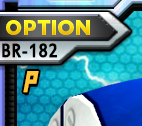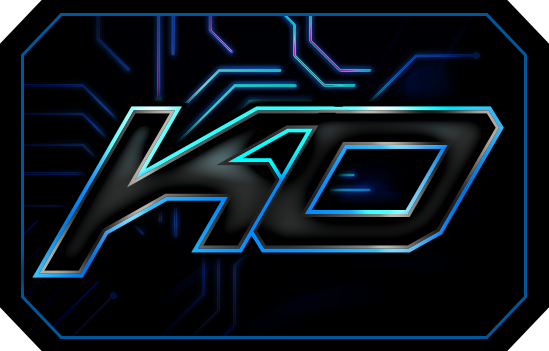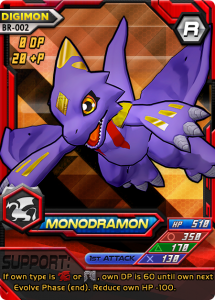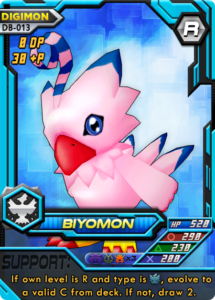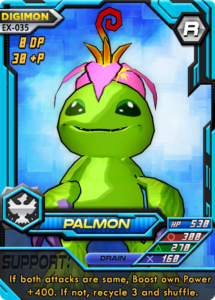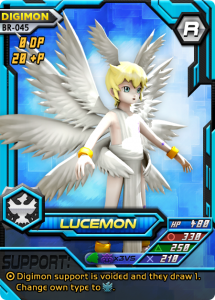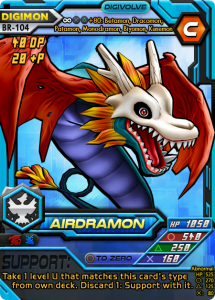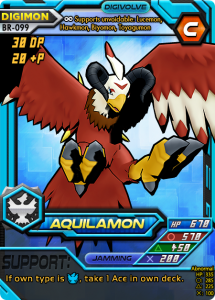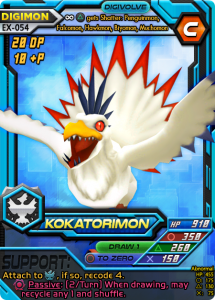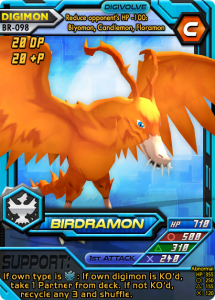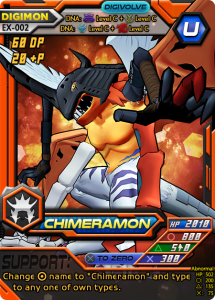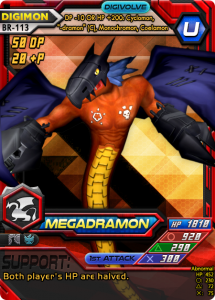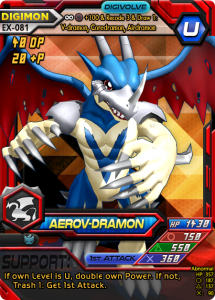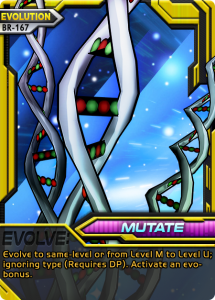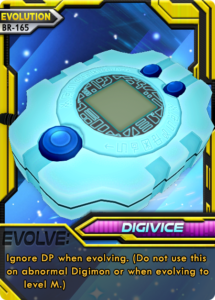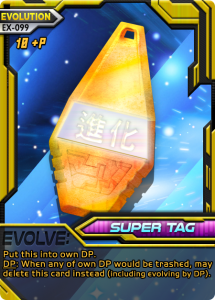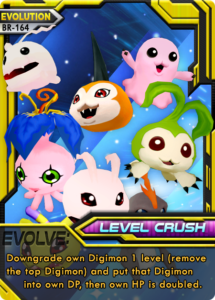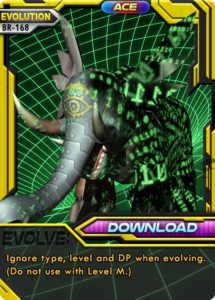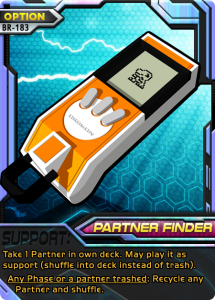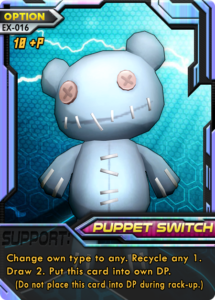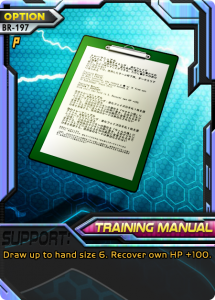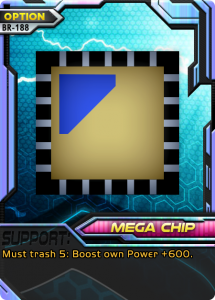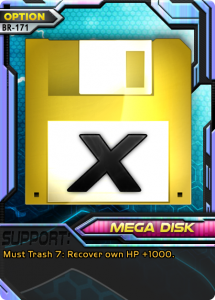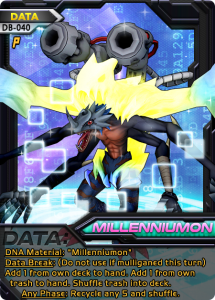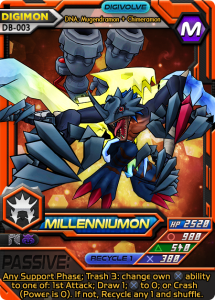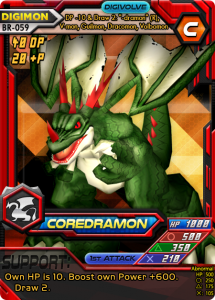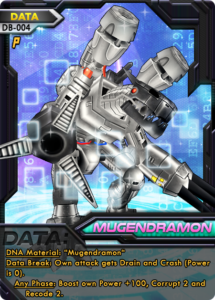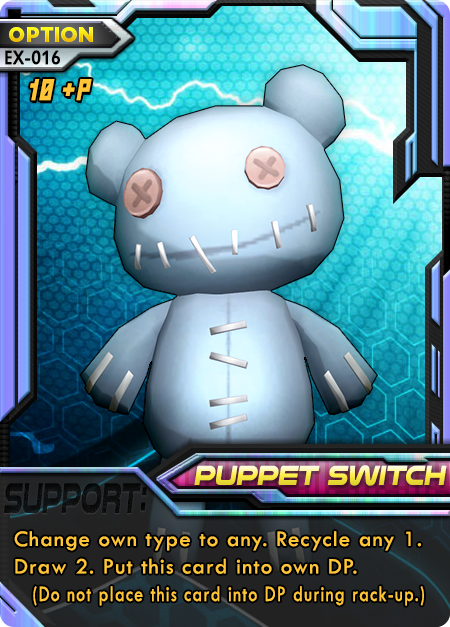Level R: 10
4 (DB) Biyomon – Used primarily for her draw 2, as the evolve effect is only usable early game. Evolve effect is great for not only fixing an early brick but also for toolboxing a specific Level C for the situation needed (Jamming on Aquilamon or Circle hate on Airdramon for example). This can also assist bluffing before attacks are chosen, especially since the other Rs don’t have Circle hate, therefore Airdramon is a great pick; and moves forward into Kimeramon’s DNA.
4 (EX) Palmon – The one and only good predictive card in the deck. Power +400 on the same-prediction is pretty top notch here and can easily end an annoying opposing Level C with too much health or a Level U that slipped in. The alternative helps fuel our main inevitability engine of recuperating the deck.
1 Lucemon – Having the ability to void anything is pretty nice, even though it lets the opponent draw. Even if this gets digimon-voided (but not Firewalled), you still get the type change effect, which can be crucial for activating Aquilamon to fetch the Ace or attaching Kokatorimon to start the engine.
1 Monodramon Partner – This is our partner. I sincerely wish we could use it to evolve or use the support regularly. Unfortunately, until the DATA proxy is used, Monodramon must be considered nothing more than a searchable DATA card for the purposes of Mega evolving. After that, he facilitates our deck quite well. Just about any replacement partner would probably do well here.
Level C: 10
4 Airdramon – Decent HP body for stalling until Level U if necessary. Can be devastating if it comes from Biyomon. Can occasionally search Aeroveedramon. Sadly, this support is often a dud and is only necessary for Kimeramon’s easy DNA. When on the active, any Metal (not in deck), Wind or Dragon can be used as DNA for Kimeramon. This essentially means any Level C in this deck.
4 Aquilamon – Despite the ridiculous body on this bird—which is quite handy, the primary use for it is to support and fetch Download. This can be difficult if Download was recycled after evolving to Kimeramon/Millenniumon since their types are Enigma, but their bodies should buy enough time to get a Puppet Switch or Lucemon. This card is absolutely crucial early, then used about once after that to return Download to the hand after it’s recycled and sits in the trash unused.
1 Kokatorimon – This card provides valuable engine-fuel by itself. As long as you don’t lose the active, it should start adding quality to the deck almost immediately. In the ideal game, Kokatorimon isn’t actually usable until a type change occurs, since you would be Downloaded to a Kimeramon. However, Aeroveedramon and Megadramon do exist as temporary surrogates with huge bodies, so the Kokatorimon is still possible on Level U. It cannot be overstated how crucial this attachment is to the function of the deck. If it gets shattered, it should be the top recycle priority for later use. This along with trash-cost cards in the deck can single-handedly set up the deck as a raging inferno.
1 Birdramon – The support can find the partner when KO’d, which is a bit of a setback but absolutely better than not having it. Otherwise, it’s a good functional any-recycle to help boost our deck before its ready.
Level U: 7
4 Kimeramon – Necessary for the main strategy. Large body. Gets us to Millenniumon. Great for Mutate and Level Crush.
2 Megadramon – Primarily in the deck for its Wind typing (to activate supports) and level, Megadramon also boasts a pretty large body in the form of power. This can give us pseudo-Mega power until we’re ready to evolve. HP isn’t much of a concern in this deck when it can effectively bounce around high level Digimon repeatedly, so high Power is far more desirable. The support ability can be incredibly clutch as well, winning several games by KOing opposing Megas and Ultimates.
1 Aeroveedramon – This card has a lot going for it: If you normal evolve to it using Airdramon, it picks a card from the top 3. It has a decent body with a sometimes-necessary 1st Attack that’s pretty high. It can activate Wind-based supports and its own support is incredibly relevant almost all the time, doubling power on Level Us. Regardless, the fail state can give non-Us (such as Millenniumon) 1st Attack on support.
Evolution: 6
2 Mutate – Level-hop from U to U with 300 bonus HP. Ideally, the target is from Aeroveedramon/Megadramon to Kimeramon once the partner is drawn. However, Mutating to stay alive is perfectly valid as well. Make sure to rack the +30Ps in the deck so their costs can be paid.
1 Level Crush – Used almost exclusively to deny the 2KOs when Millenniumon starts to get weak. By the point, the deck should be perfectly set up and Level Crush has a high likelihood of being drawn from a trim and fit deck. Crush down to Kimeramon and start preparing the Download/Mutates for more endurance later. At this point, Kimeramon’s HP would be 4020, which is soul-crushing to face.
1 Download ACE – The bread and butter of the deck. Download should be used liberally, early, and often. Always attempt to recycle this into the deck and bank one in hand in case an HP-refresh is necessary. This card can potentially ensure an opponent never gets a KO.
1 Super Tag – This is a semi-fail state but can assist at getting to Level U without trouble. In addition, it sets up a nice DP contingency in case the main hitter dies unexpectedly. It’s possible to use Super Tag to set up for Mutate.
1 Digivice – Fail state but acts as an effective catch-all for Level U.
Option: 12
2 Puppet Switch – Essential for early re-use of Download and other key components of the deck (Millenniumon DATA). Use this to change to Wind type to enable supports. Keep hand size up. DP bonus helps set up Mutate.
2 Partner Finder – The partner is incredibly key in this deck. The road to Millenniumon is paved with Mugendramon DATA, and so it is our proxy card. The Partner must be in hand to use the proxy, so partner finders are more necessary than it may first seem. The good news is, after the first use, the second finder can be used to shuffle the partner back in, giving them a key appearance late game in case the main attacker gets KO’d with no good replacement. At 2, this deck essentially has 3 chances in the deck to get the partner.
2 Cherrymon’s Mist FIREWALL – This is the most orthodox and reliable Firewall. This could be at 3 copies, but homogeny kills in this deck. This deck requires diversity and re-use.
1 Dark Destroy FIREWALL – The third Firewall should be Dark Destroy. Since Death Evolution will always fail due to our higher level and Jugonsatsu simply adds more tankiness to an already tank deck, Dark Destroy is necessary. The ability to punish supporting with a Level U is devastating when the opponent is behind.
1 Vending Machine – No recycle-based deck would be complete without a Vending Machine. This makes the deck less vulnerable to trash, mulligans, and can help boost setup to the deck thinning process.
1 Training Manual – Necessary to plug a weakness to discard and since the deck needs to dig late game into the streamlined deck.
1 Mega Chip – The cost ironically sets up the deck by removing all cards at an equal rate, but the “recycle any” effects can cherry pick what goes back in. In addition, this makes a devastating blow.
1 Mega Disk – Same as Mega Chip for purpose, but with slighly more trash capability and a significant increase to the deck’s endurance. This is often a target for constant re-use.
1 Silver Ball – Nearly staple leveler of playing fields.
Data: 1
1 Millenniumon DATA – Almost always used as a slightly weaker Any-Phase Vending Machine, hence only one copy of vending machine. If any Data Break occurs, this deck will probably lose.

